Cao Dai Temple tour: a journey to explore the most mysterious religion in Vietnam
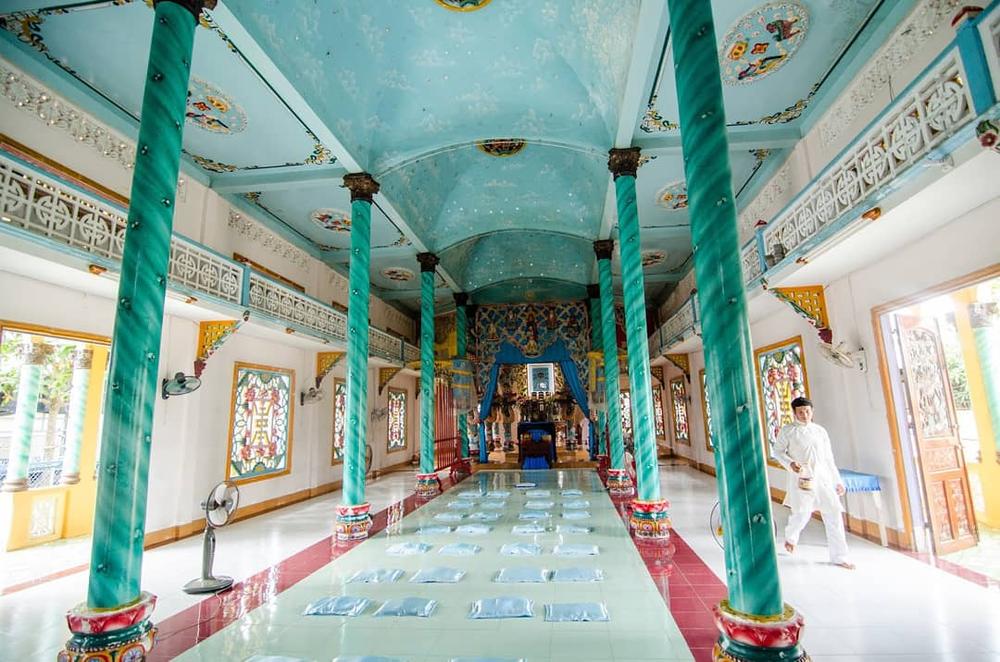
Cao Dai Temple (also known as Cao Dai Holy See) was constructed in 1933 in a unique architectural style that reflects its blended traditions. Of all the places most people visit on a day trip from Ho Chi Minh City, going on a day tour to Cao Dai temple is one of the best things to do in Ho Chi Minh city to fully embrace the unique local vibe. The Cao Dai religion (Caodaism) is unique to southern Vietnam and was established in 1926, this temple was built by the French around that time. It’s something completely different and rather mysterious. Cao Dai blends Buddhism, Christianity, Taoism, Confucianism, and Islam. It is the 3rd largest religion in Vietnam and the temple you will visit is absolutely stunning.
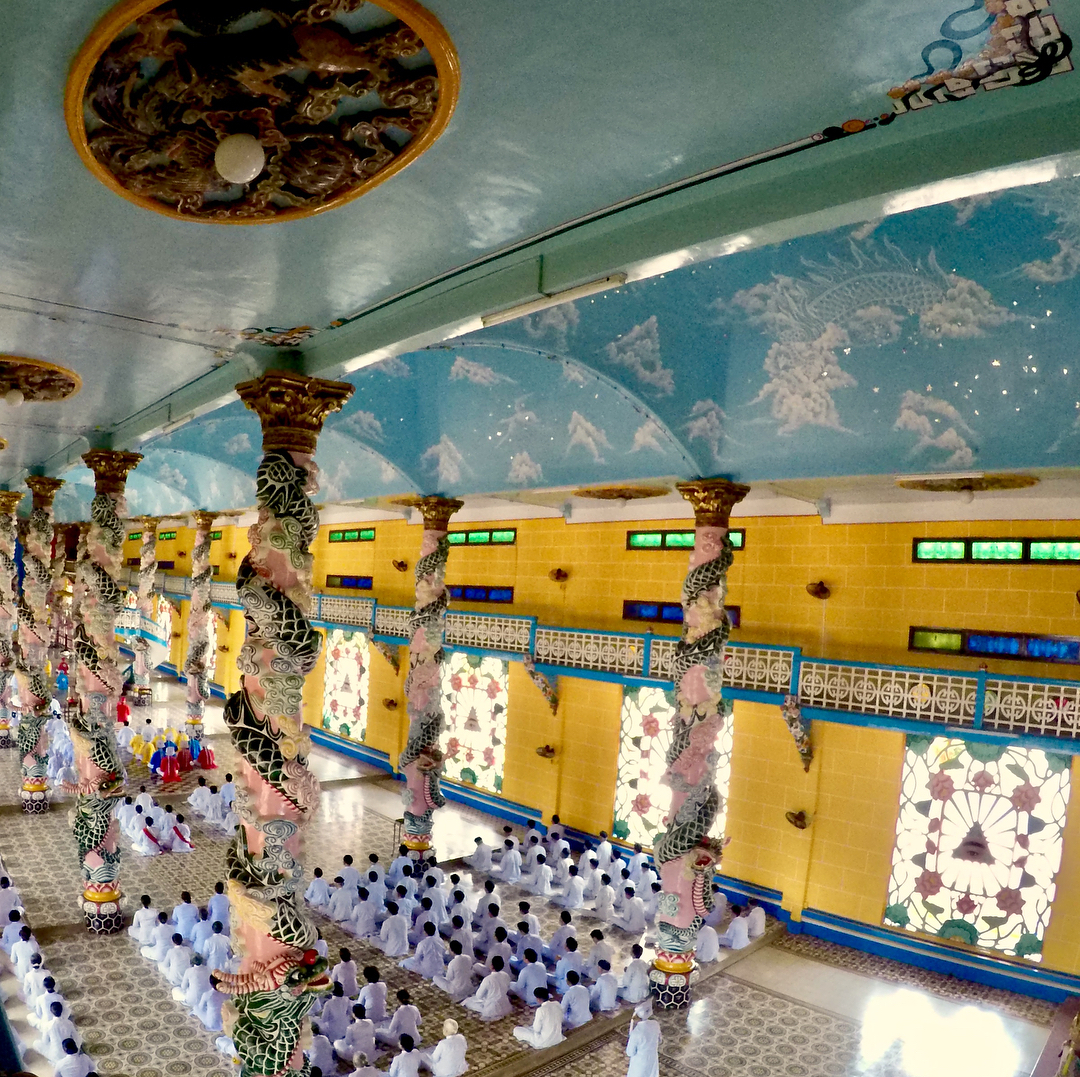
Embrace the divinity of religious sites in Ho Chi Minh city with Inspitrip now!
History of the Cao Dai religion
The founder of the Cao Dai religion was Ngo van Chien, a Vietnamese official who worked for the French administration. The literal translation of Cao Dai is A Top Place. This religion has distributed 5 million adherents by Vietnam, Europe, and The United States. Its symbol is an eye within a triangle, the third eye or the eye that everything he sees and the triangle is the triangle of justice.
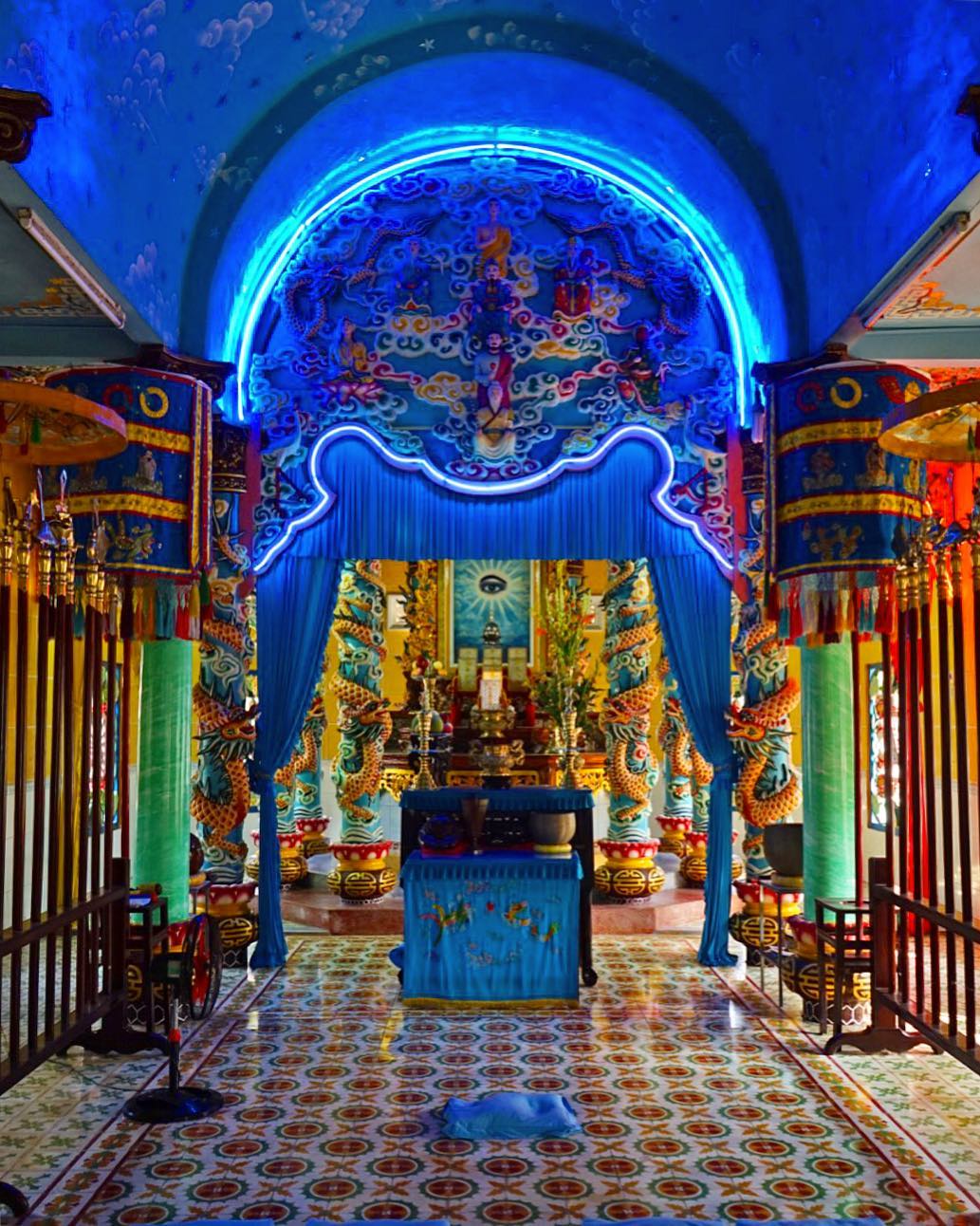
Cao Dai’s pantheon of saints includes such diverse figures as the Buddha, Confucius, Jesus Christ, Muhammad, Pericles, Julius Caesar, Joan of Arc, Victor Hugo, and the Chinese revolutionary leader Sun Yat-sen. These are honored at Cao Dai temples, along with ancestors.
History of the temple
Constructed between 1933 and 1955, the Great Temple of Cao Dai closely resembles a Christian cathedral in its architecture – two square towers, a long central nave with an upper gallery, and side aisles. The altar and ambulatory are at the opposite end from the entrance, just as in a typical church. The religion Caodaist is headquartered in Hoa Thanh district of Tay Ninh province, about 90 kilometers Northwest of Ho Chi Minh City and approximately 55 kilometers of the Cu Chi tunnels. The temple, visible from almost any part of the complex, is located about 150 meters from the main entrance from the road.
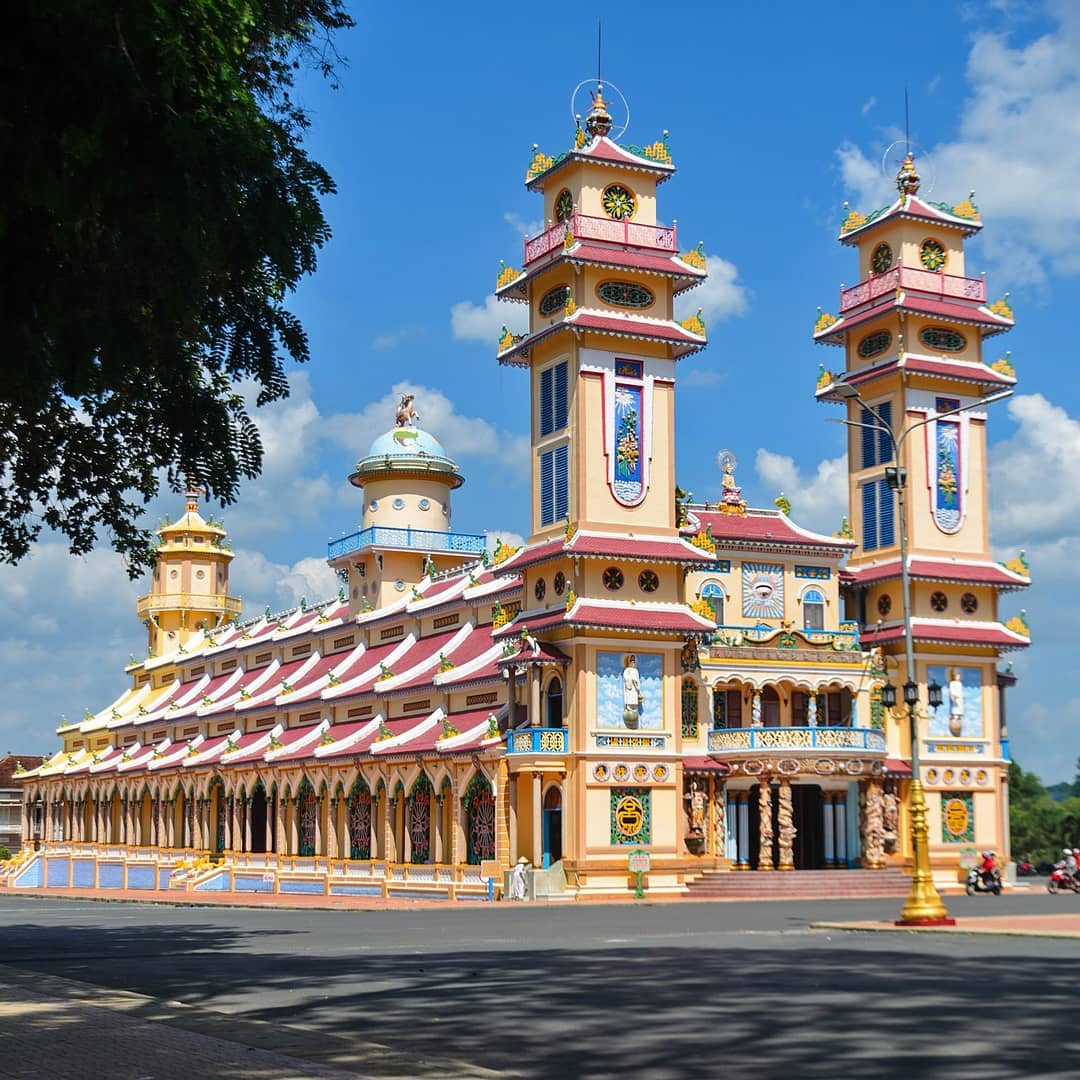
Cao Dai encourages obedience to the three duties (those between king and citizen, father and child, husband and wife) and five virtues (humanity, obligation, civility, knowledge, reliability) of Confucianism. Followers are expected to participate regularly in worship services, practice vegetarianism at least ten days per month, purify their body and spirit and avoid killing living beings. Cao Dai’s organization is patterned after that of Roman Catholicism, with nine levels of hierarchy including a pope, cardinals, and archbishops. Worship involves group prayer in the temple, elaborate rituals and festivals.
Getting to the Cao Dai Temple
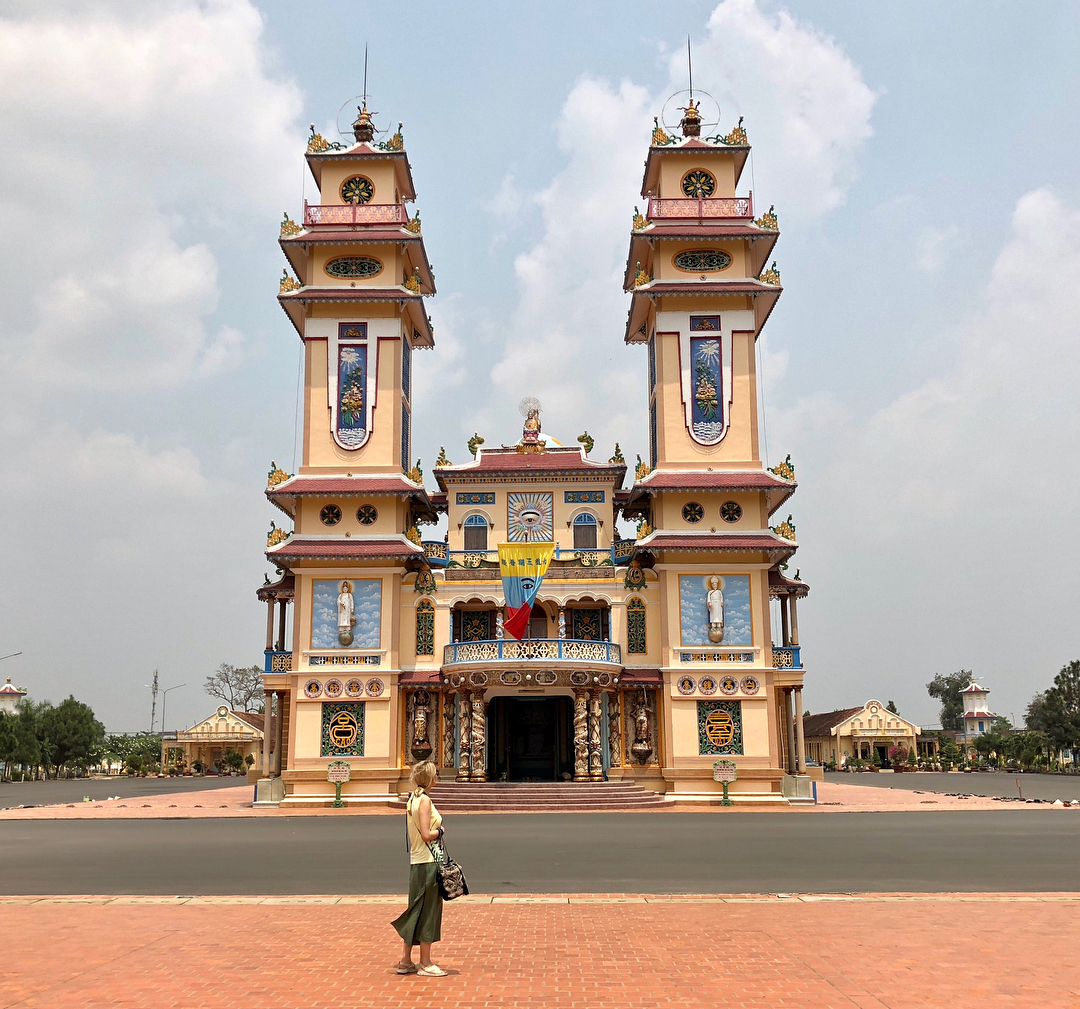
The only way to get to the Cao Dai Temple is by road. Although it is only 90 kilometers from the center of Ho Chi Minh City, the traffic and the State of the roads, many of them in construction or improvement process, it makes will take 2 hours and a half to arrive until the Cao Dai Holy headquarters. To take advantage of the day ideally go in van/tourist bus from Saigon, that can be purchased easily in any travel agency in the area of backpackers from Saigon (streets of Tham, Tran Hung Dao, and surroundings). For those who dare to ride a motorcycle, they know that the only secure parking is in Cao Dai is for the faithful, not allowing tourists to park. Also, you can go on the regular bus line, specifically the bus 702 departs from a station of buses from the Ben Thanh market in Ho Chi Minh City to Tay Ninh. Another alternative is to go with the bus 13 to Cu Chi and from there take one of the many buses to Tay Ninh.
What you should wear when visiting Cao Dai temple
Most worshippers are lay followers, who wear pure white robes. Men with the rank of priest and higher have brightly colored robes reflecting their spiritual allegiance: yellow (symbolizing Buddhism and virtue), blue (Taoism and pacifism) or red (Confucianism and authority). Bishops and Cardinals have the Divine Eye emblazoned on their headpieces. Visitors are warmly welcomed at the Cao Dai Temple and may watch ceremonies and take photos from the galleries.
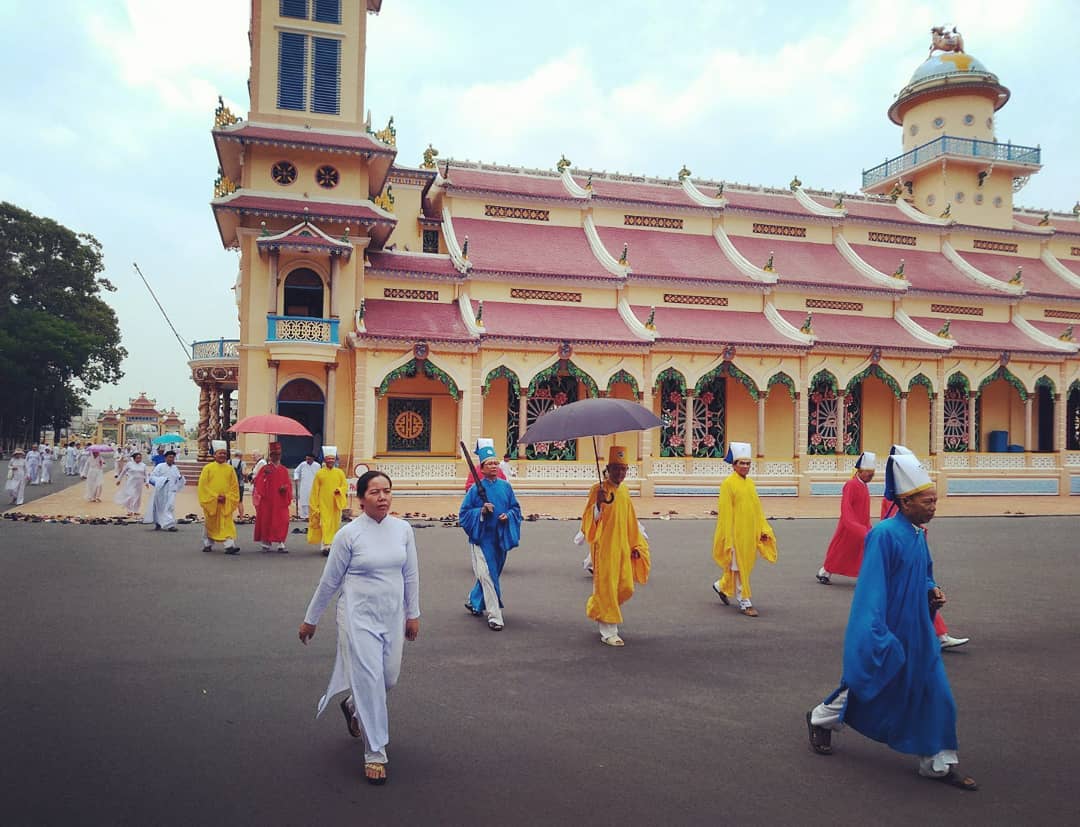
Visitors are only asked to wear trousers or skirts covering the knee, Don’t forget to remove your hats, coats, and shoes before stepping inside the building. Of course, although there is no standard rule of dress, try to wear formal outfits consistent with the religious place (such as trousers or skirts covering the knees). The area in the middle of the sanctuary is reserved for many Cao Dai priests. The noon ceremony always has the largest audience, since most visitors are day-trippers from Ho Chi Minh City
What you can experience at Cao Dai temple
If you love exploring religious temples in Ho Chi Minh city, add Cao Dai temple to your itinerary. The exterior and interior of the Cao Dai Temple are both extravagantly decorated, incorporating symbols, abstract designs, and images of saints. The high ceiling is painted sky-blue with fluffy clouds and the floor tiles have busy patterns. The dragon-encrusted columns that run the length of the nave number 28, representing the 28 manifestations of the Buddha. Seven-headed cobras represent the seven human emotions. On the whole, there are 9 hierarchies of worship. These include a pope, cardinals, archbishops, priests, and so on who make sure to have rituals, festivals and prayer regularly practiced. The temple has a similar design with a Christian Cathedral, which prominently features side aisles and an altar. From the distant view, your eyebrows will also be raised by a high dome decorated with both clouds and saints.
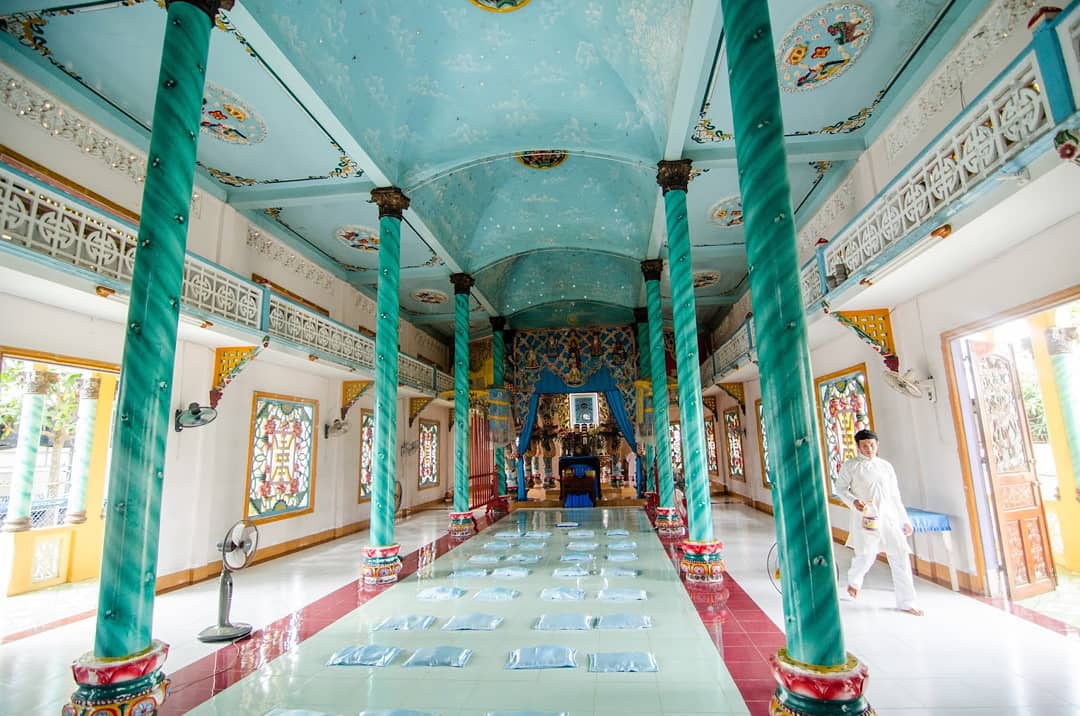
There are four ceremonies with chanting each day: 6:00 am, noon, 6:00 pm, and midnight. An orchestra of 10 musicians and a choir of 20 youths lead the service in prayer and hymns. The hymns sound western, but the accompanying music is traditional Vietnamese. One of the most memorable sights at the Cao Dai temple is the sea of worshippers who dress in flowing robes and assemble in orderly rows during a ceremony. Men sit on the right and women on the left.
Watching Caodaists pray is one of the major highlights
Watching Caodaists pray is one of the major highlights when visiting the temple as they dress in long flowing robes of white for lay followers, yellow, blue or red for priests whilst bishops have the Divine Eye embroidered on their headpieces. During worship, men are seated on the right and women on the left with all devotees seated in orderly rows. The building is a combination of Neo-Gothic, Baroque and Oriental design and is very ornately decorated including dragon wrapped pillars, seven-headed cobras, and ceilings of sky blue. Female tourists will enter the temple through a door at the base from the left side and then roam around the outside of the colonnaded hall as a clockwise direction. Meanwhile, men will enter from the right side and move around the hall as an anticlockwise direction. During the visit, you are able to take pictures, but under the instructions of the priests. Remember there are some places you have no permission to take photographs.
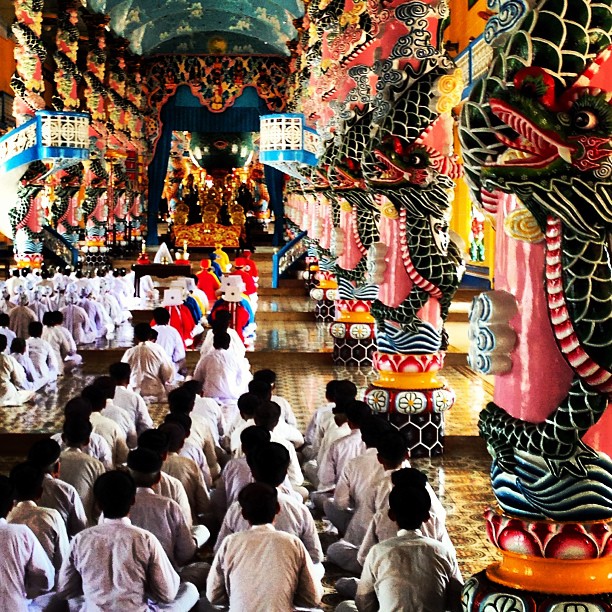
The Cao Dai Temple can be combined with a visit to the Cu Chi Tunnels to make for a worthwhile day. The 75-mile-long complex of tunnels at Cu Chi has been preserved by the government of Vietnam and turned into a war memorial park with two different tunnel display sites, Ben Dinh and Ben Duoc. Visit the prominent Cu Chi Tunnels tour with Inspitrip now!
- Private tour to explore Cu Chi tunnels
- Visit Mekong delta & Cu Chi tunnels in only one day
- Cu Chi Tunnels and the Napalm girl village
Some interesting facts about Cao Dai temple
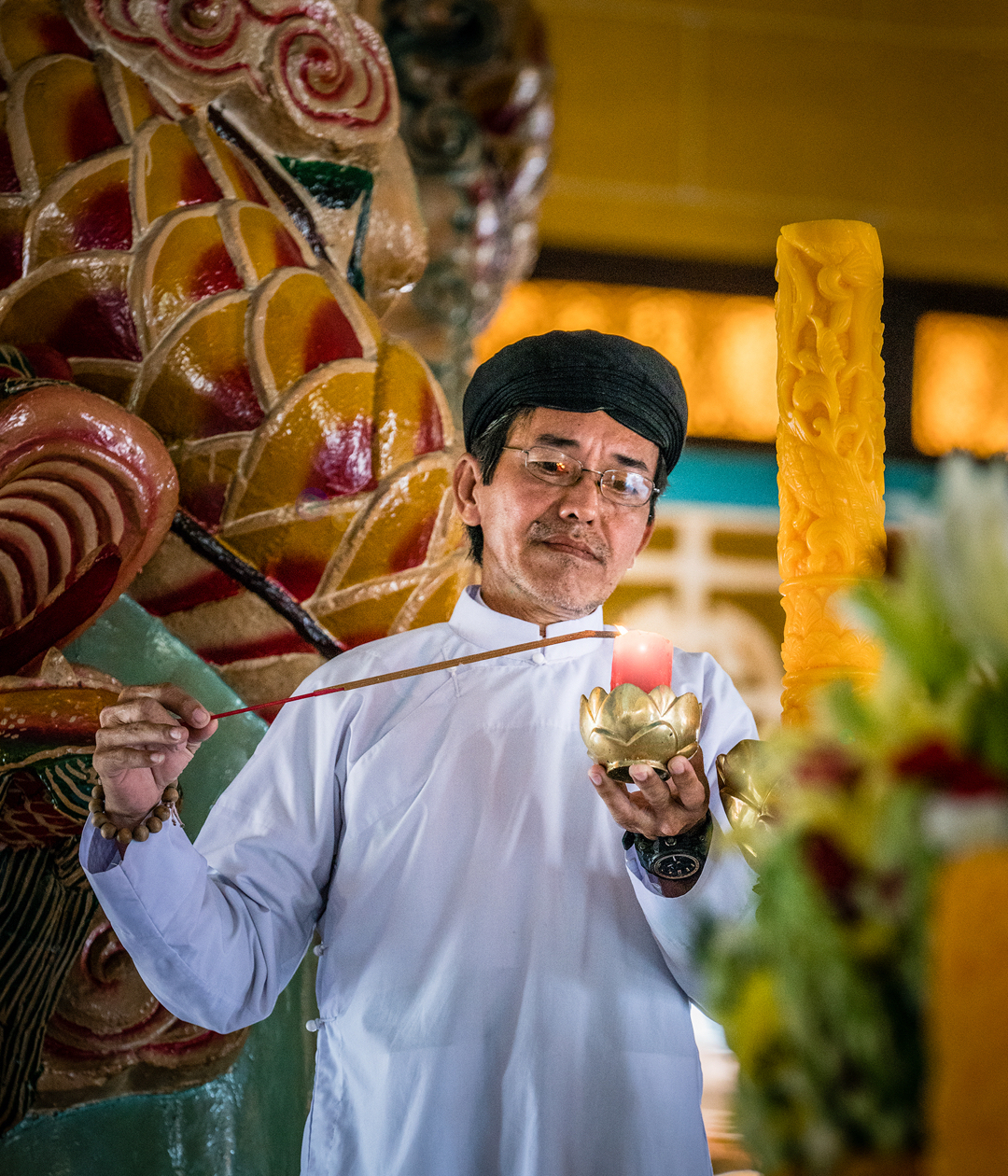
- The Divine Eye (representing God) is located above the front portico of Cao Dai Temple that has the Ying & Yang icon in its pupil. In general, ceremonies are daily held with 2 services accompanied by a choir and musicians.
- There are around 1,000 other Cao Dai temples in this part of Vietnam.
- It is estimated there are now 5 million followers worldwide and Caodaism is Vietnam’s third largest religion.
- The faith is named for its supreme being, known as Cao Dai, a Taoist epithet for the supreme god. Cao Dai is seen as the same God honored in all major world religions, but the chosen term avoids gender, personality or other earthly attributes.
- Cao Dai followers strive for inner peace and harmony in the world and try to gain religious merit and avoid bad karma.
How to have the most fulfilling travel experience at Cao Dai temple
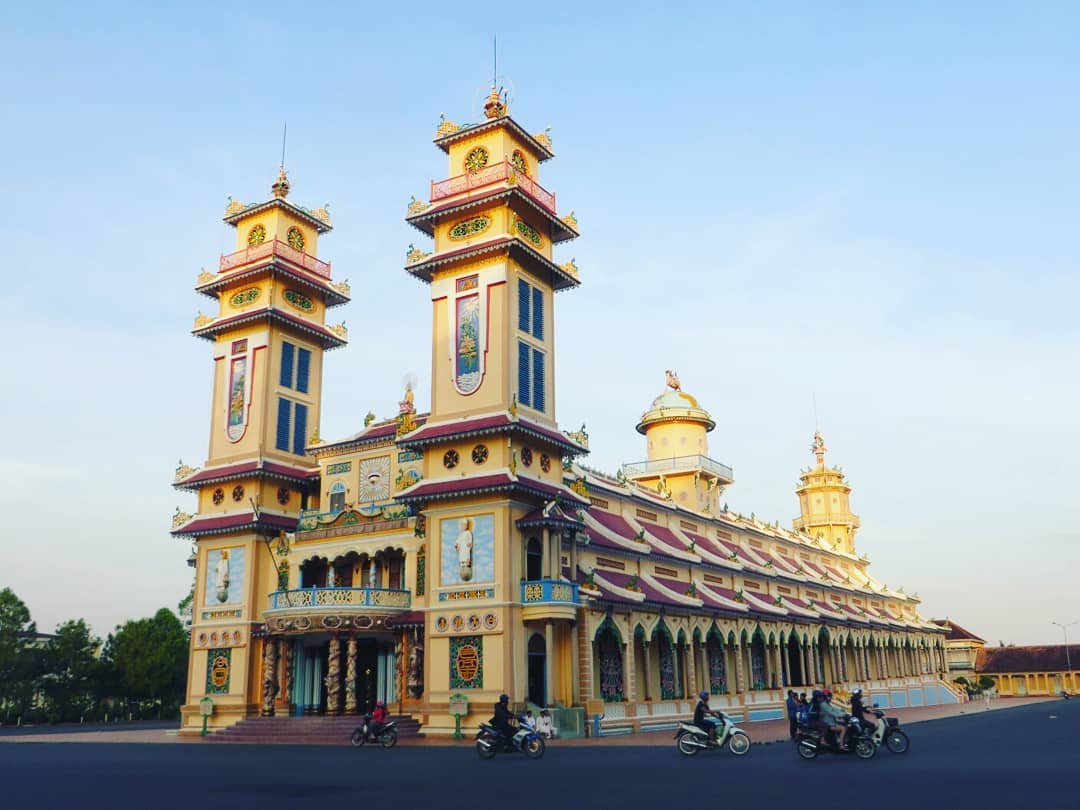
- 10 minutes before the start of the religious ceremony, access is prohibited inside the temple.
- During the church service, but most visitors have access to landing that between the front door and the stairs of the temple.
- It allows access to 2 balconies/amphitheater that reach over half of the temple. This amphitheater is relatively small and easily filled, it is advisable to take place 5 to 10 minutes before Mass begins.
- When the Mass started, you are not allowed to walk around the temple (including outdoor gardens).
- Highly recommend arriving at the temple Cao Dai no more afternoon 11: 00, to give a tour of the surrounding area, visit inside the temple, chat with the monks and take a good place to view the 12: 00 mass.
- In the sacred area of Cao Dai are not allowed vendors, so it is advisable to bring water and sun protection.
- It’s always easier if you’re traveling with a local tour guide or going on a tour that covers both Cao Dai temple and Cu Chi Tunnel. With local English speaking tour guides, transport, entrance fees, and lunch are covered in the cost of the Inspitrip tour and guaranteed to give you an unforgettable experience.
Power by Inspitrip, travel platform that connects travelers and local insiders for the most authentic travel experience.